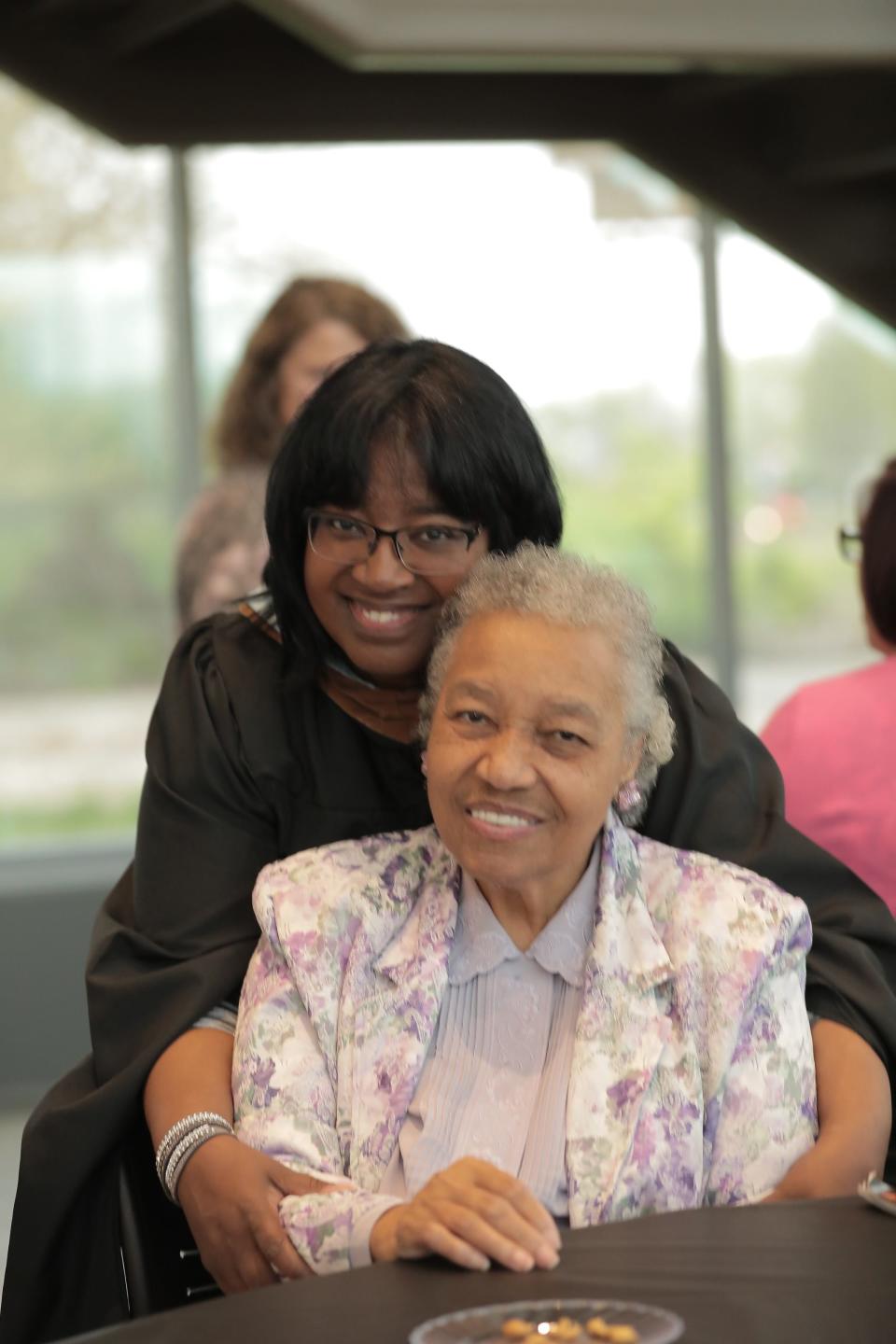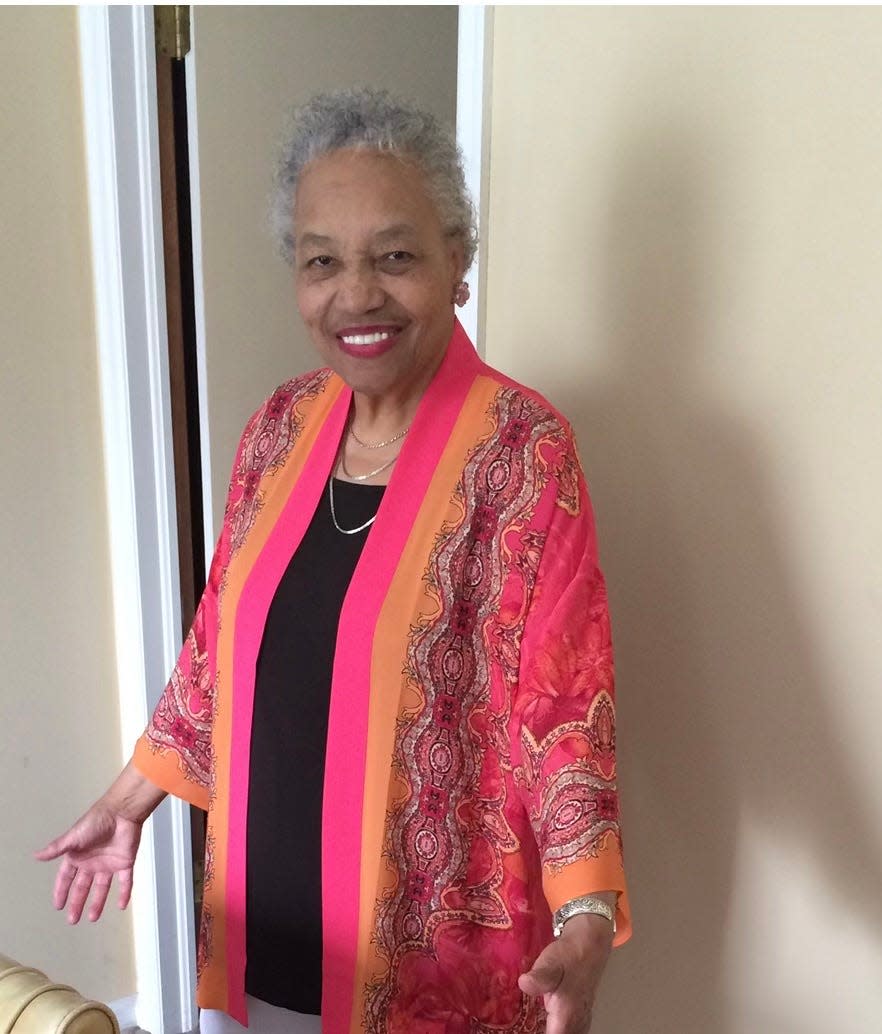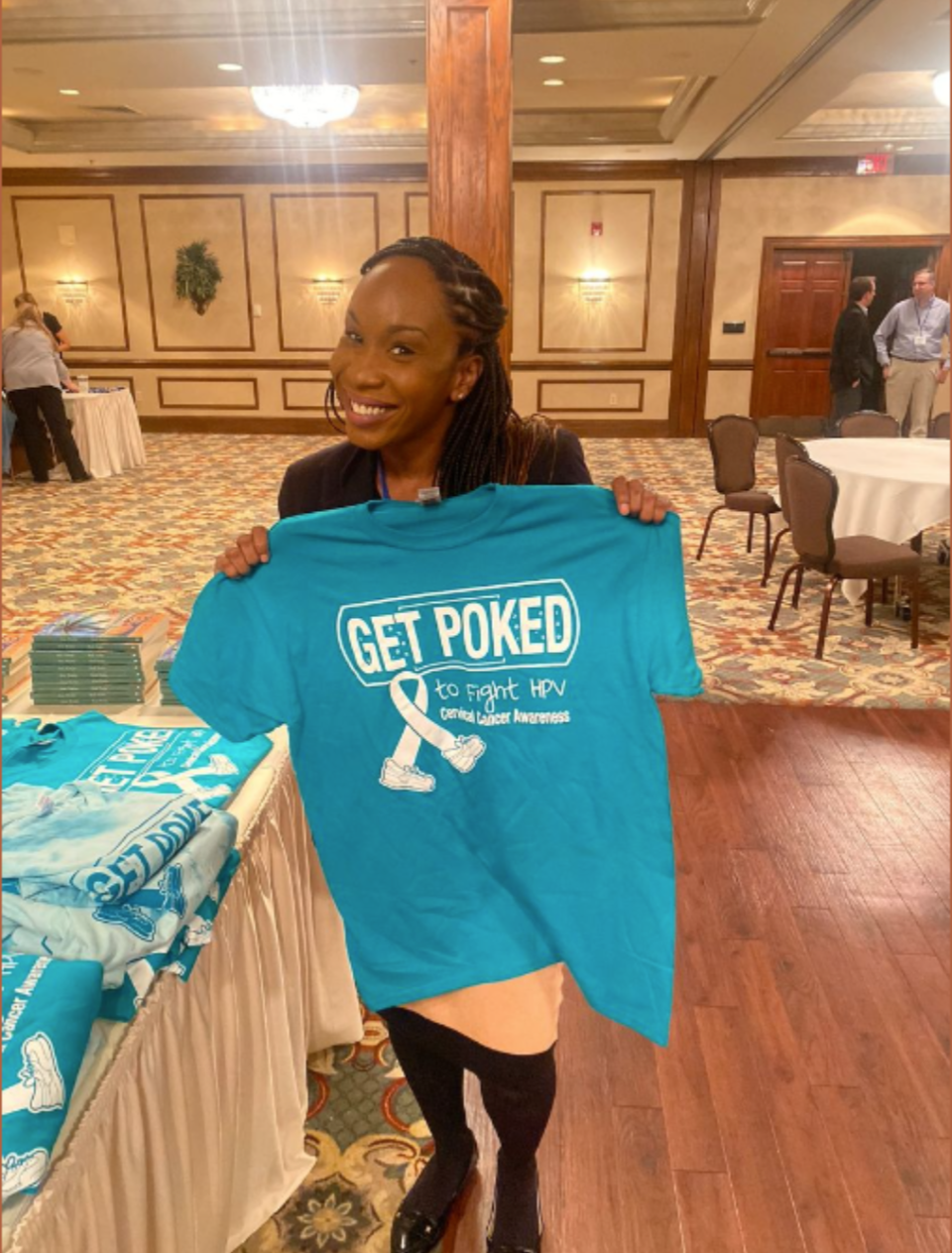Black women and cervical cancer, 'a disease of health disparities’
Editor's Note: The following is part of a class project originally initiated in the classroom of Ball State University professor Adam Kuban in fall 2021. Kuban continued the project this spring semester, challenging his students to find sustainability efforts in the Muncie area and pitch their ideas to Deanna Watson, editor of The Star Press, Journal & Courier and Pal-Item. This spring, stories related to health care will be featured.
MUNCIE, Ind. – It’s 1973. Matilda Barber is working as a nurse at St. John’s Hospital — now Fresenius Medical Care at St. John’s Health System — in Anderson, Indiana.
Barber goes to the gynecologist every year for pap smears, and on a regular visit, her doctor notices spots on her cervix. The doctor then diagnoses Barber with cervical cancer at 37 years old.

“I was upset because he referred me to a surgeon, and I knew what was going to happen then. I was diagnosed on a Friday and was scheduled to have surgery that following Monday,” said Barber.
As a Black woman in the United States, Barber is among the second-most-likely demographic to develop cervical cancer. According to MedicalNewsToday, Black women are 80% more likely to die from cervical cancer than white women. The overall five-year survival rate for Black women is around 56%, lower than the compared rate of 68% for white women.
Barber said she had to have a partial hysterectomy and that it was a blessing for the doctors to detect the cancer in her body at an early stage, and she was able to keep her ovaries.

“I really wanted six children. At that time, I had only had three, but thank God I had two girls and a boy,” said Barber. “I got very good care in the hospital, and some of the nurses that I taught at the Holy Cross School of Nursing took care of me.”
"The less 'glamorized' cancer"
The lack of education about cancer is one of the main reasons why a lot of women don’t get screened for cervical cancer. According to an analysis study conducted by BMC Women’s Health in April 2020, Black women in Indiana have a 23% higher cervical cancer incidence rate and a 25% higher mortality rate compared to white women. Black women in Indiana also have one of the lowest cervical-cancer-screening rates in the U.S.
The YWCA Greater Lafayette’s Women’s Wellness Program serves 36 counties, offering education and breast-and cervical-cancer screenings for the underinsured, uninsured or low-income minority women. The program provides financial assistance to women who have been diagnosed with cervical and/or breast cancer.
Mayra Puentes-Castro, the director of the Women’s Wellness Program in Lafayette, Indiana, said that the program serves 1,643 women but is always wanting to serve more.
“Being understaffed or staff turnover can affect the service that we provide to these women, and a lot of them need the respect and dignity to be able to have conversations about their struggle with cancer,” said Puentes-Castro, the youngest director at the YWCA in Lafayette.
The Breast and Cervical Cancer Program in the Women’s Wellness Program teaches women about how the human papillomavirus (HPV) is one of the biggest causes of cervical cancer. Puentes-Castro said that the program is trying to get out into the community to show women still need help with cancer screenings. The Women’s Wellness Program accepts phone calls from women who need the program every Monday through Friday from 8 a.m. to 5 p.m.
“Cervical cancer is the less popular, less ‘glamorized’ cancer that not a lot of people talk about,” said Puentes-Castro. “We want to really highlight that we don’t get a lot of funding for cervical cancer like we get for breast cancer.”
Human papillomavirus (HPV) and cervical cancer in the Black community
The human papillomavirus, or HPV, is one of the leading factors for developing cervical cancer. In a study published in June 2020 on the prevalence of high-risk HPV diagnoses according to race conducted by the “American Cancer Society Journals,” Black women in the United States have a higher rate of high-risk HPV positivity than white women. High-risk HPV, or hrHPV is identified in up to 99.7% of cervical cancers worldwide, according to BioMed Central.
Gabrielle Darville-Sanders, the strategic director of the National HPV Vaccination Roundtable for the American Cancer Society, spoke at a Vaccinate Indiana event in November 2022 to discuss raising HPV vaccine rates in Indiana.
“American Cancer Society is in the process of preventing cancers,” said Darville-Sanders. “We vaccinate early on to prevent cancers later on in life.”
As part of the movement to vaccinate early, the Age 9 Campaign was created by Dr. Debbie Saslow, the managing director of the HPV and GYN Cancer roundtable for the American Cancer Society and Darville-Sander’s co-worker, to push for HPV vaccinations in children to start at age 9.
“Instead of starting the conversation when the child is between the ages of 11 and 12, let’s start the conversation early at 9 so that if a parent is hesitant, at least you start to sweeten them up to the idea,” said Darville-Sanders.
Although the U.S. has medical devices and tests that can catch pre-cancer symptoms earlier and treat them successfully, that’s not always the case demographically or internationally.

“Cervical cancer is basically a disease of health disparities,” said Shelly Dusic, a 20-year cervical cancer survivor and the director of the National Roundtable on Cervical Cancer for the American Cancer Society.
Dusic said it was estimated back in 2019 that there would be 1,906 new cases of cervical cancer in Black, non-Hispanic women. Of those 1,906 new cases, Dusic said, it was expected for there to be 788 deaths.
“There's no reason anyone should have to die of cervical cancer with the technology and the resources that we have today,” Dusic said. “The Black population is having issues getting screened on time to find the cancer at an early stage when it's easier to treat and having more trouble from diagnosis to successful treatment.”
The Human Rights Watch produced a report on cervical cancer deaths in Georgia, focusing specifically on underserved and low-income patients. Darville-Sanders, who was a contributor to this report as a representative of HPV Cancer Free Georgia, said that results from this report concluded that low-income women do not have easy access to health care because they feel as though they can’t trust their doctors, that their reproductive health rights are not as important and that there was bias against them from medical providers.
“If you're underserved or lower income, you may not feel empowered to fight the system that has not been set up to encourage you and allow you the option to fight,” Darville-Sanders said. “When we look at certain states and their rates of pre-screenings, HPV vaccinations and cervical cancer screenings, it’s not the greatest picture. People aren't doing what they're supposed to be doing or doctors are not recommending certain things. There’s still a lot of work to be done.”
This article originally appeared on Muncie Star Press: Black women and cervical cancer, 'a disease of health disparities’

